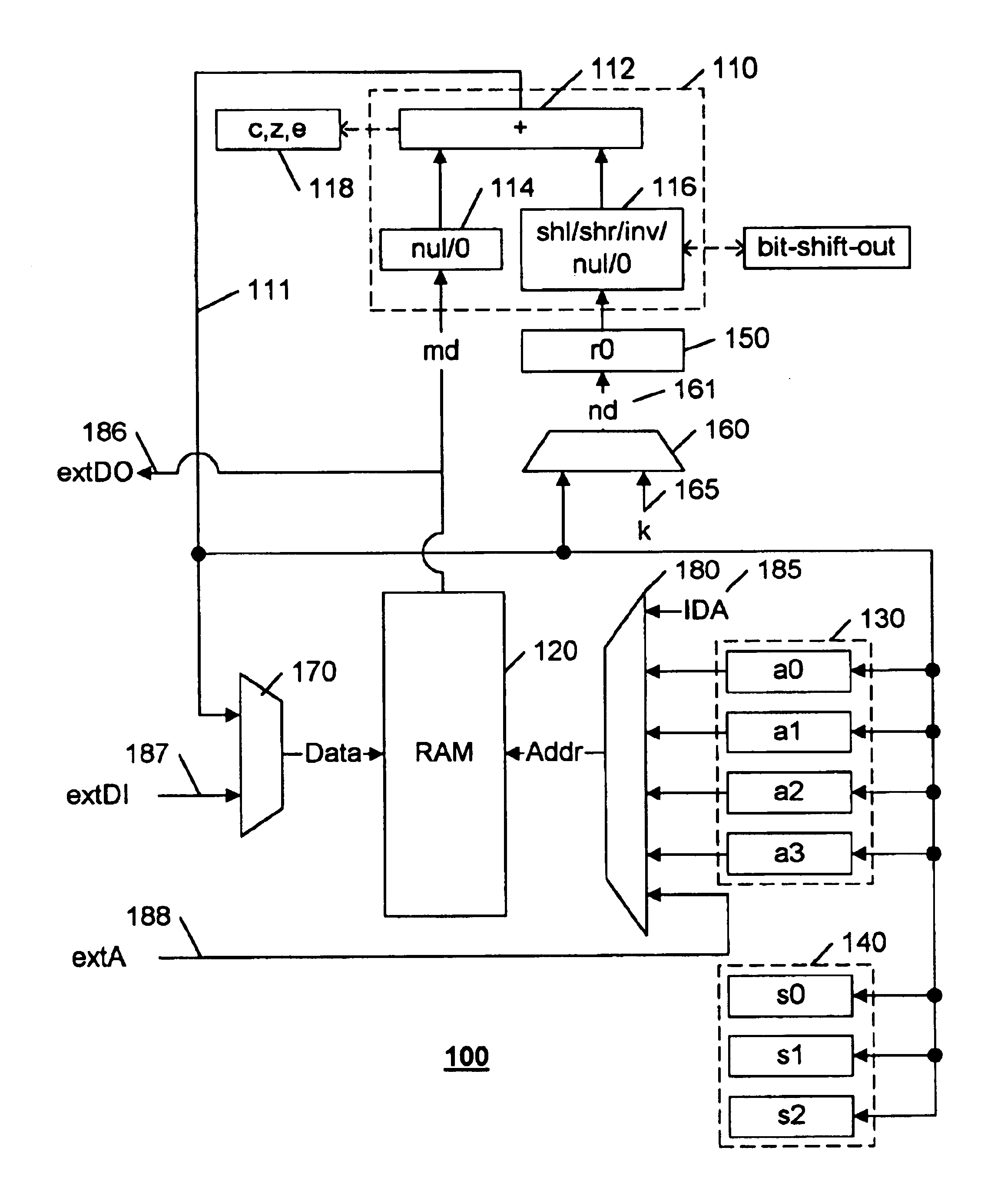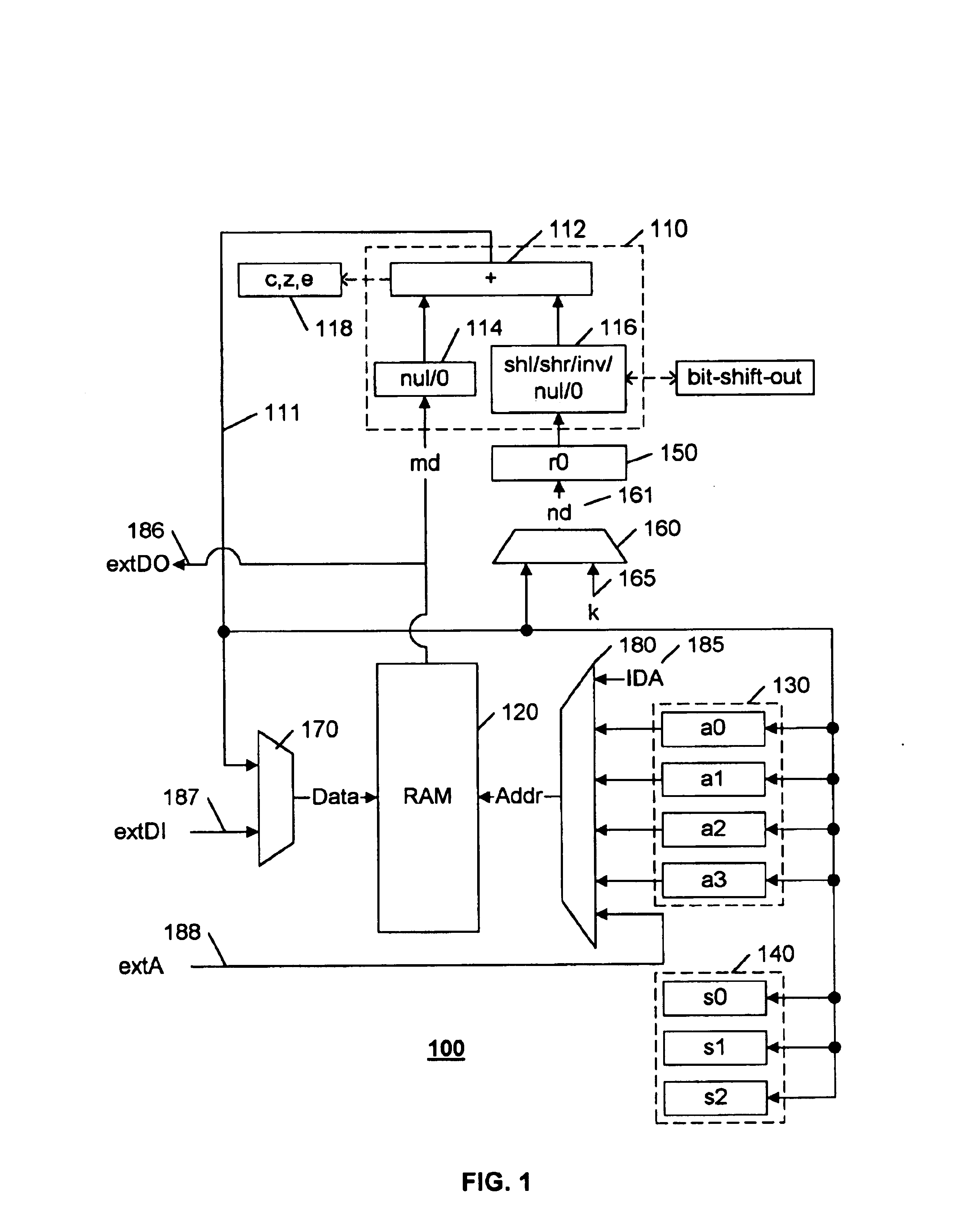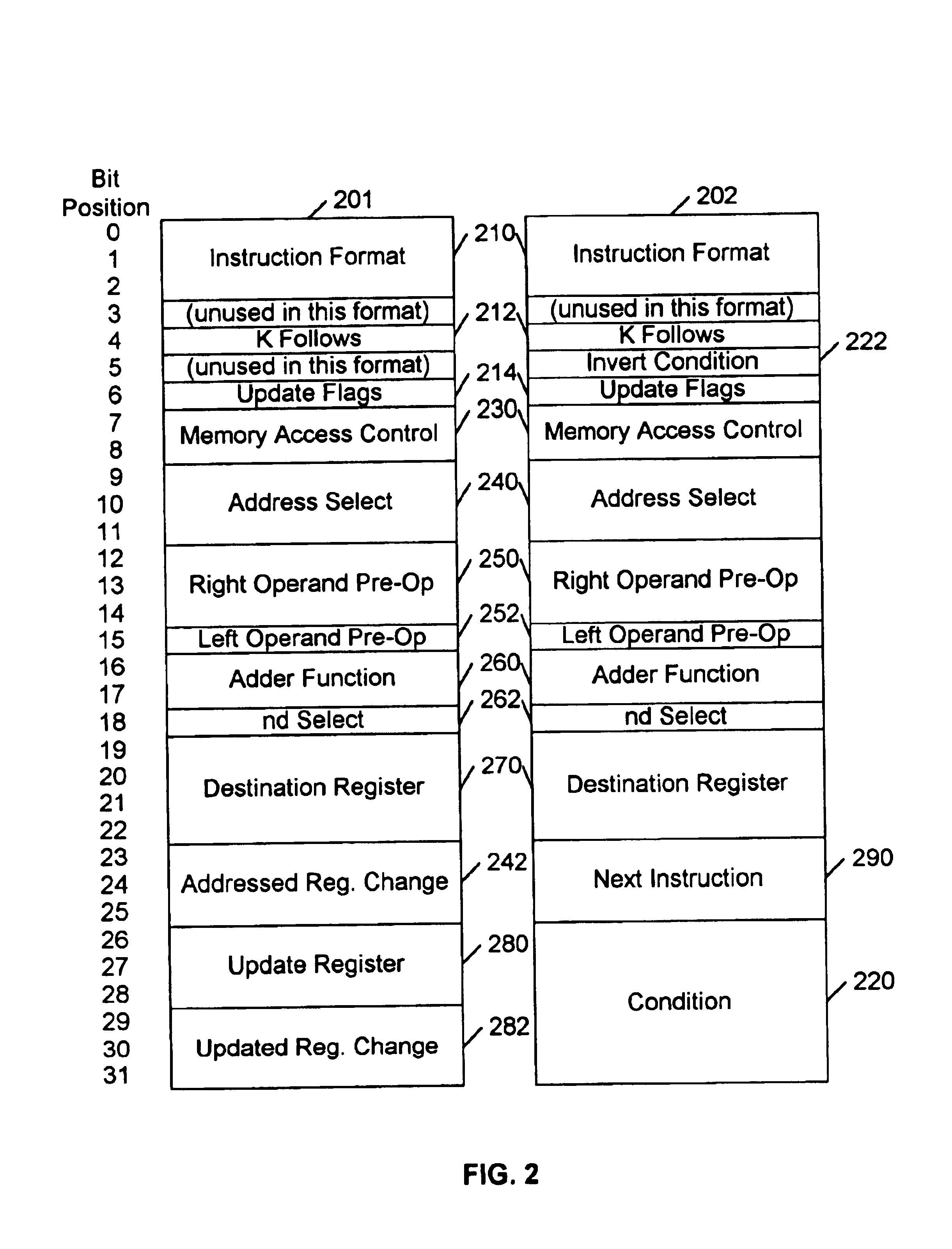Simple algorithmic cryptography engine
a cryptography engine and algorithm technology, applied in the field of processing systems, can solve the problems of not being economically feasible to include in every device, not necessarily being able to achieve the performance goals expected of low-cost general-purpose processors, and introducing the risk that the embodied algorithm will become obsolete, etc., to facilitate cryptographic authentication, minimize the complexity of the design, and minimize the complexity of the interconnection
- Summary
- Abstract
- Description
- Claims
- Application Information
AI Technical Summary
Benefits of technology
Problems solved by technology
Method used
Image
Examples
Embodiment Construction
[0017]This invention is based on the observation that cryptographic operations, such as digital signing and verification, public-private key exchange processes, and so on, typically involve large data variables, but relatively simple arithmetic operations. A common algorithm for authentication systems is Digital Signature Algorithm (DSA). Another common algorithm that has been proposed as a standard (ANSI X9.62) for digital signing and verification is the Elliptic Curve Digital Signature Algorithm (ECDSA). This algorithm, as incorporated in the Digital Transmission Content Protection system (DTCP) has been adopted for inclusion in digital audio and video products equipped with IEEE-1394 connections. The ECDSA is particularly well suited for a low-cost embodiment, because the use of elliptical curves involves the simple mathematical operations of addition, subtraction, multiplication, and inversion.
[0018]The size of the data variable used for digital signing and verification is large...
PUM
 Login to View More
Login to View More Abstract
Description
Claims
Application Information
 Login to View More
Login to View More - R&D
- Intellectual Property
- Life Sciences
- Materials
- Tech Scout
- Unparalleled Data Quality
- Higher Quality Content
- 60% Fewer Hallucinations
Browse by: Latest US Patents, China's latest patents, Technical Efficacy Thesaurus, Application Domain, Technology Topic, Popular Technical Reports.
© 2025 PatSnap. All rights reserved.Legal|Privacy policy|Modern Slavery Act Transparency Statement|Sitemap|About US| Contact US: help@patsnap.com



